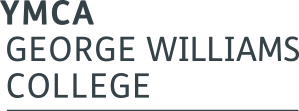Are we achieving our aims | Practical tools and tips
These resources are designed to help you ensure your evaluation is meaningful – by which we mean that the process actively enhances your understanding of what works, the quality of practice, and strengthens your relationships. Meaningful evaluation generates ‘actionable insights’ - in other words; a tangible, achievable list of things you can change and which you are confident will help you and your colleagues get even better at what you do.
Beginner
Start here if you are a youth practitioner new to evaluation and quality improvement design
Advanced
Resources to build on your experience of evaluation frameworks and continuous quality improvement

Case study
Many organisations came together to deliver young people services and explore their impact under the Youth Investment Fund. The organisations adopted a shared theory of change and measurement tools, which enabled them to collectively demonstrate impact. Practically, this meant that they used the same categories to collect demographic data and information about young people’s engagement. They measured the same outcomes, asking young people to respond to a consistent set of feedback questions, and using a common tool to observe and reflect on the quality of staff and volunteer practice with young people. The collective work meant that, as a group, they could prove that; youth work achieved outcomes, higher quality work led to higher quality outcomes, and young people with the lowest levels of social and emotional skills gained the most.
